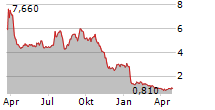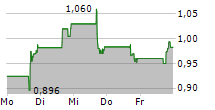
- INZ-701 was well-tolerated and significantly increased plasma pyrophosphate (PPi) levels in patients with end-stage kidney disease (ESKD) undergoing hemodialysis; low PPi levels are associated with calciphylaxis, a rare, life-threatening complication of ESKD -
- Company plans to initiate a registrational trial in calciphylaxis in 2025 subject to regulatory alignment and sufficient funding -
BOSTON, Oct. 24, 2024 (GLOBE NEWSWIRE) -- Inozyme Pharma, Inc. (Nasdaq: INZY) ("the Company" or "Inozyme"), a clinical-stage biopharmaceutical company developing innovative therapeutics for rare diseases that affect bone health and blood vessel function, today announced positive interim data from its ongoing Phase 1 SEAPORT 1 trial of INZ-701 in patients with end-stage kidney disease (ESKD) undergoing hemodialysis (NCT06283589). These data will be presented at the American Society of Nephrology's (ASN) Kidney Week 2024, which is being held October 24-27, 2024, in San Diego.
"The interim data from the SEAPORT 1 trial demonstrate that INZ-701 significantly raised PPi levels in patients with end-stage kidney disease and was well-tolerated in this high-risk population," said Douglas A. Treco, Ph.D., CEO and Chairman of Inozyme Pharma. "Low PPi levels are linked to the development of calciphylaxis, a rare and life-threatening complication of end-stage kidney disease, as well as the associated morbidity and mortality. Pending alignment with regulatory authorities and sufficient funding, these encouraging results provide a strong foundation for advancing INZ-701 into a registrational trial in calciphylaxis."
"Calciphylaxis represents one of the most challenging complications of end-stage kidney disease, with profound impacts on patient quality of life and survival. The interim results from the SEAPORT 1 trial are encouraging, showing that INZ-701 elevated PPi levels in patients with end-stage kidney disease. PPi levels are critically deficient in patients with calciphylaxis and by addressing this underlying deficiency, INZ-701 has the potential to modify the course of this disease and offer hope where no approved therapies currently exist," added Sagar Nigwekar, MD, MMSc, Co-Director, Kidney Research Center, Massachusetts General Hospital.
Key Findings from the Interim Analysis of SEAPORT 1
The open-label trial investigated the safety, tolerability, pharmacokinetics (PK), and pharmacodynamics (PD) of INZ-701 in adults with ESKD and low PPi levels undergoing hemodialysis. On average, ESKD patients have lower PPi levels compared with healthy individuals, and those with calciphylaxis have even lower plasma PPi levels. The trial screened hemodialysis patients for PPi levels and identified the population with significantly reduced levels (<700nM) for enrollment. INZ-701 is an ENPP1-Fc fusion enzyme replacement therapy (ERT) designed to increase both PPi and adenosine. Patients (n=11) received weekly subcutaneous doses of 1.8 mg/kg of INZ-701 over a four-week dosing period; PD data from eight patients who completed the trial will be included in the ASN Kidney Week 2024 presentation.
The interim data to be presented at ASN Kidney Week 2024 demonstrated the following:
- PPi Levels: INZ-701 significantly increased PPi levels in ESKD patients receiving hemodialysis, with levels rising into the normal range by week 3 of the trial's four-week dosing schedule. The largest changes occurred in patients with the lowest baseline PPi levels.
| Timepoint | Mean PPi (nM) ± SEM (n=8) |
| Baseline-Day 3 pre-dose* | 619±74 |
| Day 10 pre-dose | 931±255 |
| Day 17 pre-dose | 1498±224 |
| Day 24 pre-dose | 1551±270 |
*Baseline consists of three timepoints collected prior to the initiation of dosing
The Company's study of healthy subjects (n=10) showed PPi levels between 1002nM and 2169nM.
- Mineral Metabolism: INZ-701 led to reductions in biomarkers of mineral metabolism, including serum phosphate (Pi) and fibroblast growth factor-23 (FGF-23), which are implicated in the pathogenesis of vascular calcification in ESKD. These findings suggest INZ-701 may mitigate the risk of pathologic calcification in these patients.
- Safety: INZ-701 was generally well-tolerated and exhibited a favorable safety profile, with no drug-related treatment-emergent adverse events (TEAEs) reported in the 11 patients who completed the four-week treatment period. All observed TEAEs were mild to moderate in severity except for one case of hyperkalemia requiring urgent dialysis.
- Pharmacokinetics: Consistent drug exposure to INZ-701 was observed with 1.8 mg/kg weekly dosing and PK profiles were consistent with the Company's prior studies in non-hemodialysis patients. We believe these results suggest consistent drug PK profiles can be maintained in dialysis patients, providing further confidence in dose selection for future trials.
- Anti-Drug Antibodies (ADAs): Low titers of ADAs were detected in three out of 11 patients at the end-of-study timepoint, approximately 30 days after the last dose. Two of these patients became ADA-negative by Day 60 after the last dose. The presence of ADAs was not associated with any adverse events.
Additional follow-up data, including characterization of genetic markers associated with PPi and adenosine metabolism and PK/PD analyses, will be presented at a future medical conference. Based on these results, the Company plans to initiate a registrational trial of INZ-701 in patients with calciphylaxis in 2025, subject to regulatory alignment and sufficient funding.
About Calciphylaxis and the PPi-Adenosine Pathway
Calciphylaxis (also known as calcific uremic arteriolopathy, or CUA) is a rare disorder with a high mortality rate that predominantly affects patients with end-stage kidney disease (ESKD). The disease is associated with low levels of inorganic pyrophosphate (PPi) and is characterized by pathologic mineralization (i.e., calcification) and intimal proliferation (the overgrowth of smooth muscle cells inside blood vessels) of the vasculature in the skin and fatty tissue. This leads to poor blood flow, blood clots, painful skin ulcers, serious infections, and often death, with a reported one-year survival rate of approximately 50%. Currently, there are no approved therapies for calciphylaxis. The estimated incidence of calciphylaxis is approximately 3.5 per 1,000 patients with ESKD with approximately 5,000 new patients presenting annually across major addressable markets.
The PPi-Adenosine Pathway plays a critical role in regulating both pathologic mineralization and intimal proliferation. The ENPP1 enzyme generates PPi, a potent inhibitor of pathologic mineralization, by hydrolyzing extracellular adenosine triphosphate. Additionally, adenosine, produced by the CD73 enzyme regulates intimal proliferation, preventing the abnormal growth of smooth muscle cells within blood vessels, which can contribute to vascular occlusion. Recent genetic research has shown that polymorphisms in the ENPP1 or CD73 genes have been linked to an increased risk of arterial calcification in ESKD patients and/or calciphylaxis, further substantiating the role of the PPi-Adenosine Pathway in this condition.
INZ-701 is designed to restore PPi levels and increase adenosine production, addressing both key elements of the PPi-Adenosine Pathway. By normalizing these processes, INZ-701 has the potential to prevent the progression of calciphylaxis, which could offer a promising therapeutic solution for this high-risk and underserved patient population.
About Inozyme Pharma
Inozyme Pharma is a pioneering clinical-stage biopharmaceutical company dedicated to developing innovative therapeutics for rare diseases that affect bone health and blood vessel function. We are experts in the PPi-Adenosine Pathway, where the ENPP1 enzyme generates inorganic pyrophosphate (PPi), which regulates mineralization, and adenosine, which controls intimal proliferation (the overgrowth of smooth muscle cells inside blood vessels). Disruptions in this pathway impact the levels of these molecules, leading to severe musculoskeletal, cardiovascular, and neurological conditions, including ENPP1 Deficiency, ABCC6 Deficiency, calciphylaxis, and ossification of the posterior longitudinal ligament (OPLL).
Our lead candidate, INZ-701, is an ENPP1 Fc fusion protein enzyme replacement therapy (ERT) designed to increase PPi and adenosine, enabling the potential treatment of multiple diseases caused by deficiencies in these molecules. It is currently in clinical development for the treatment of ENPP1 Deficiency, ABCC6 Deficiency, and calciphylaxis. By targeting the PPi-Adenosine Pathway, INZ-701 aims to correct pathological mineralization and intimal proliferation, addressing the significant morbidity and mortality in these devastating diseases.
For more information, please visit https://www.inozyme.com/ or follow Inozyme on LinkedIn, X, and Facebook.
Cautionary Note Regarding Forward-Looking Statements
Statements in this press release about future expectations, plans, and prospects, as well as any other statements regarding matters that are not historical facts, may constitute "forward-looking statements" within the meaning of The Private Securities Litigation Reform Act of 1995. These statements include, but are not limited to, statements relating to the initiation, enrollment, timing, and design of our planned clinical trials, including the Company's plans to initiate a registrational trial study in calciphylaxis, availability of data from clinical trials, the potential benefits of INZ-701, and our regulatory strategy. The words "anticipate," "believe," "continue," "could," "estimate," "expect," "intend," "may," "plan," "potential," "predict," "project," "should," "target," "will," "would," and similar expressions are intended to identify forward-looking statements, although not all forward-looking statements contain these identifying words. Any forward-looking statements are based on management's current expectations of future events and are subject to a number of risks and uncertainties that could cause actual results to differ materially and adversely from those set forth in, or implied by, such forward-looking statements. These risks and uncertainties include, but are not limited to, risks associated with the Company's ability to conduct its ongoing clinical trials of INZ-701 for ENPP1 Deficiency, ABCC6 Deficiency, and calciphylaxis; enroll patients in ongoing and planned trials; obtain and maintain necessary approvals from the FDA and other regulatory authorities; continue to advance its product candidates in preclinical studies and clinical trials; replicate in later clinical trials positive results found in preclinical studies and early-stage clinical trials of its product candidates; advance the development of its product candidates under the timelines it anticipates in planned and future clinical trials; obtain, maintain, and protect intellectual property rights related to its product candidates; manage expenses; comply with covenants under its outstanding loan agreement; and raise the substantial additional capital needed to achieve its business objectives. For a discussion of other risks and uncertainties, and other important factors, any of which could cause the Company's actual results to differ from those contained in the forward-looking statements, see the "Risk Factors" section in the Company's most recent Annual Report on Form 10-K filed with the Securities and Exchange Commission, as well as discussions of potential risks, uncertainties, and other important factors, in the Company's most recent filings with the Securities and Exchange Commission. In addition, the forward-looking statements included in this press release represent the Company's views as of the date hereof and should not be relied upon as representing the Company's views as of any date subsequent to the date hereof. The Company anticipates that subsequent events and developments will cause the Company's views to change. However, while the Company may elect to update these forward-looking statements at some point in the future, the Company specifically disclaims any obligation to do so.
Contacts:
Investors:
Inozyme Pharma
Stefan Riley, Senior Director of IR and Corporate Communications
(857) 330-8871
stefan.riley@inozyme.com
Media:
Biongage Communications
Todd Cooper
(617) 840-1637
Todd@biongage.com




